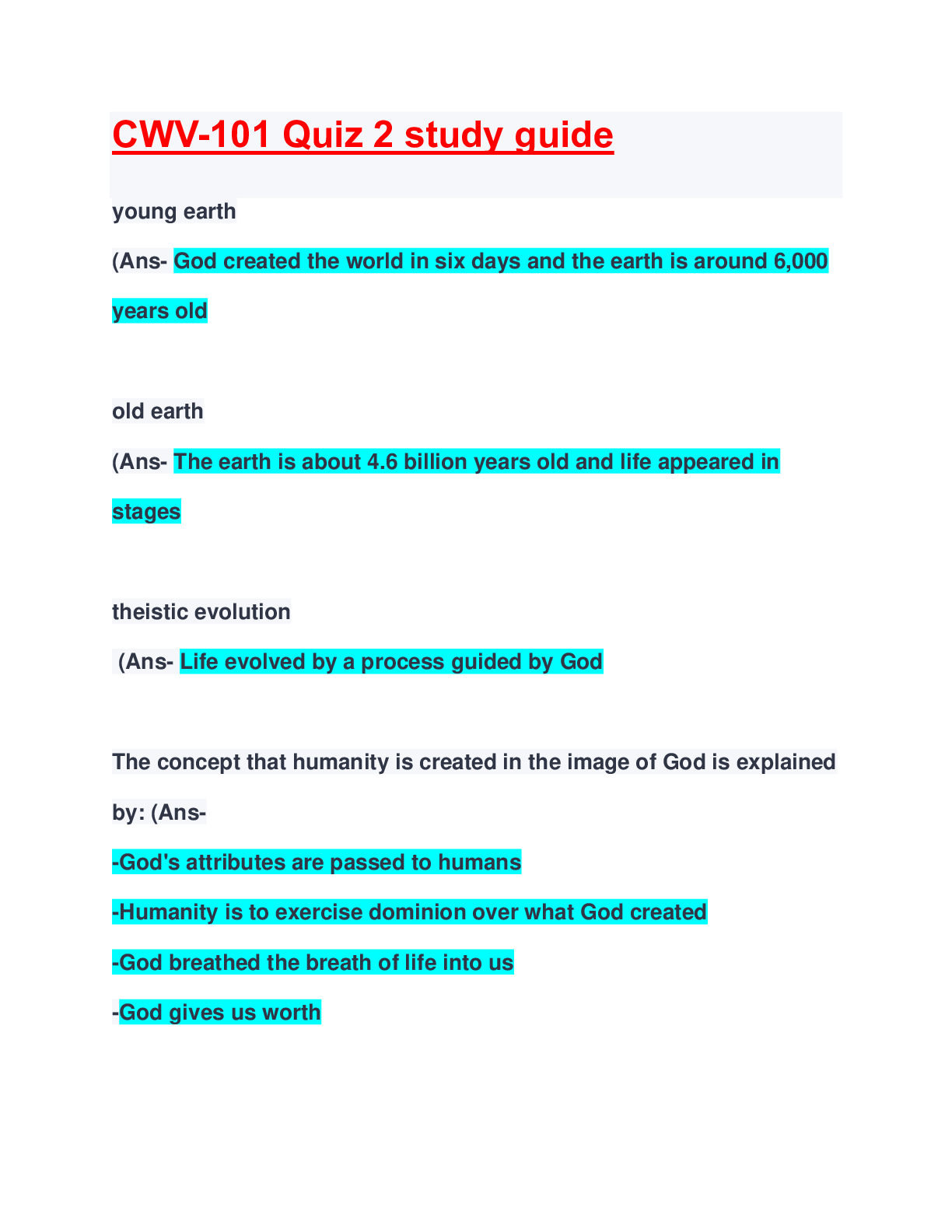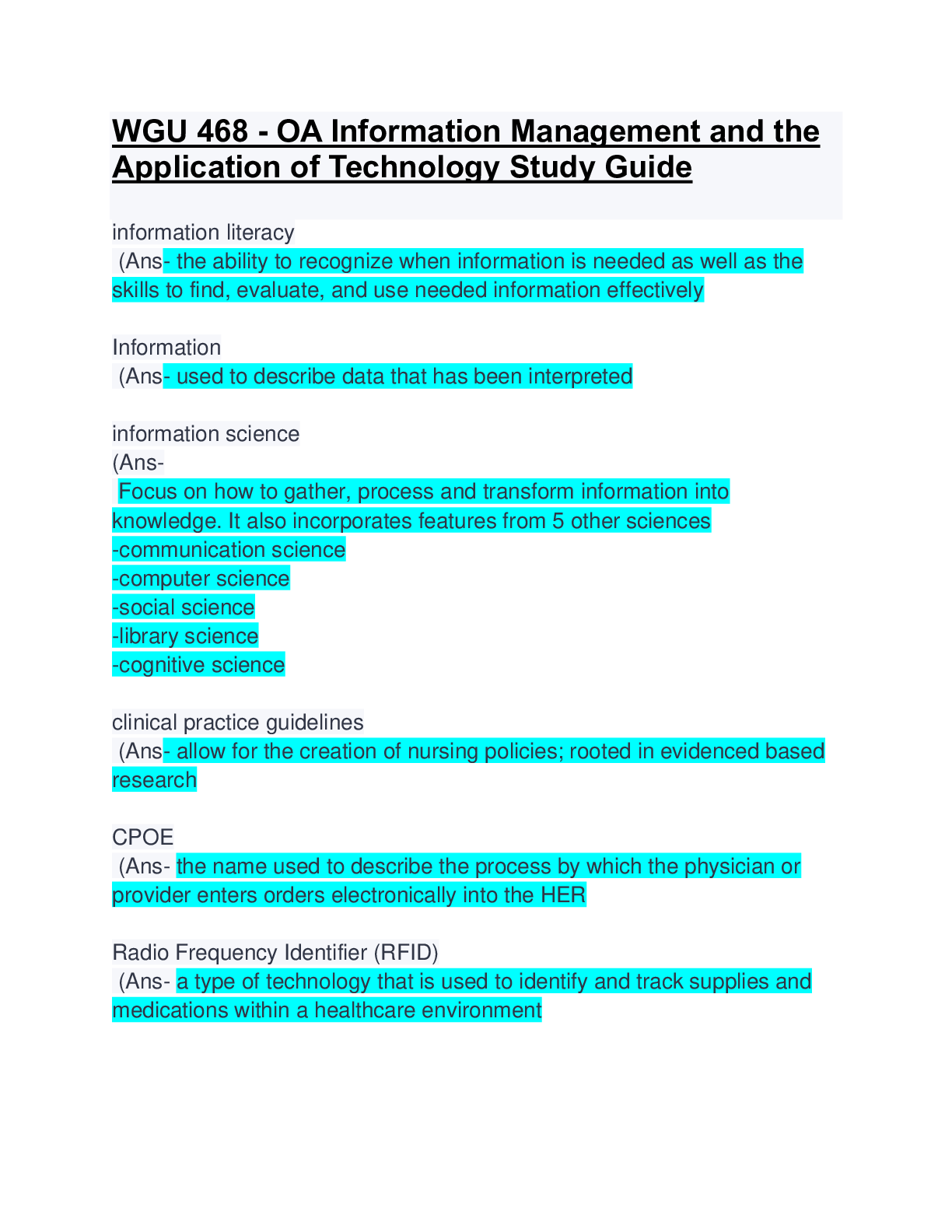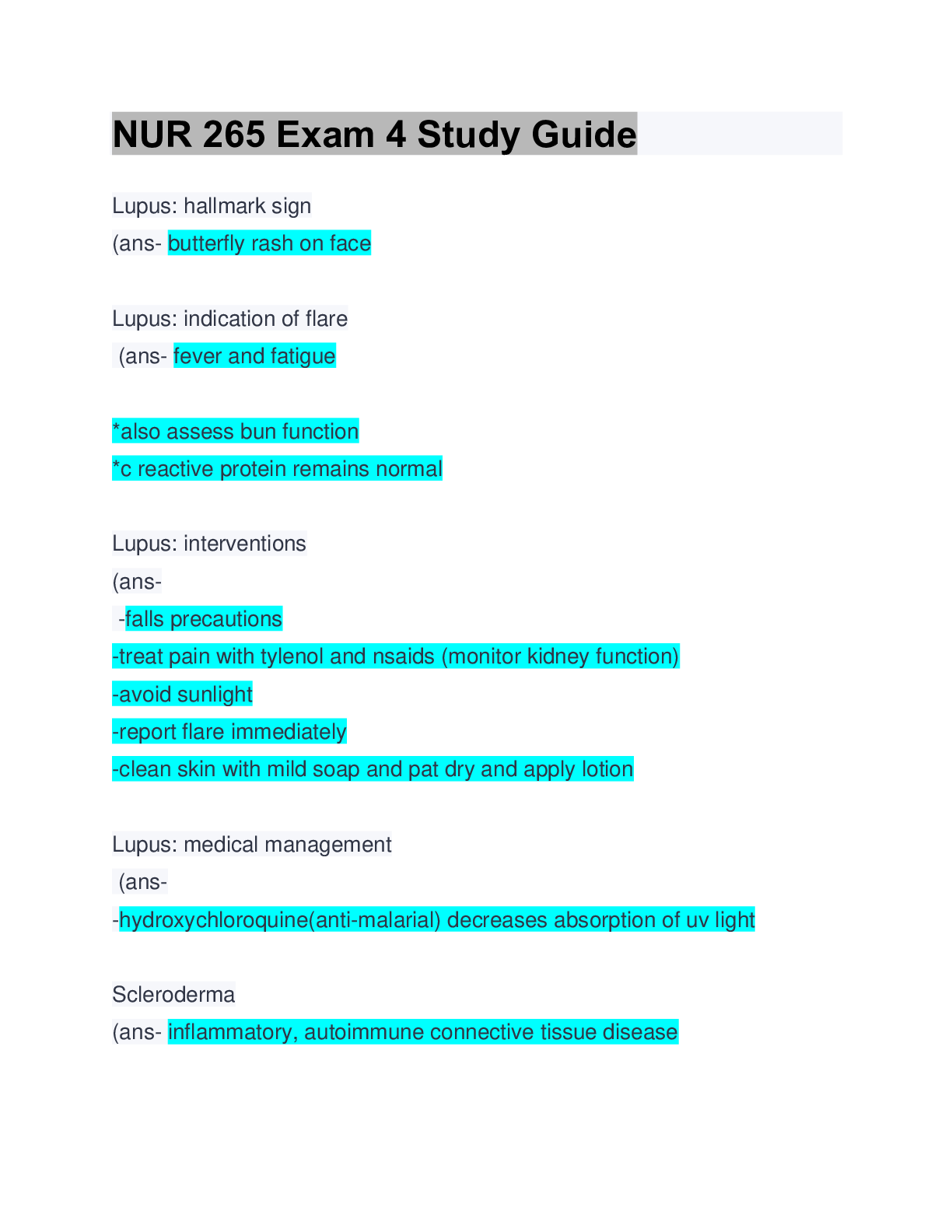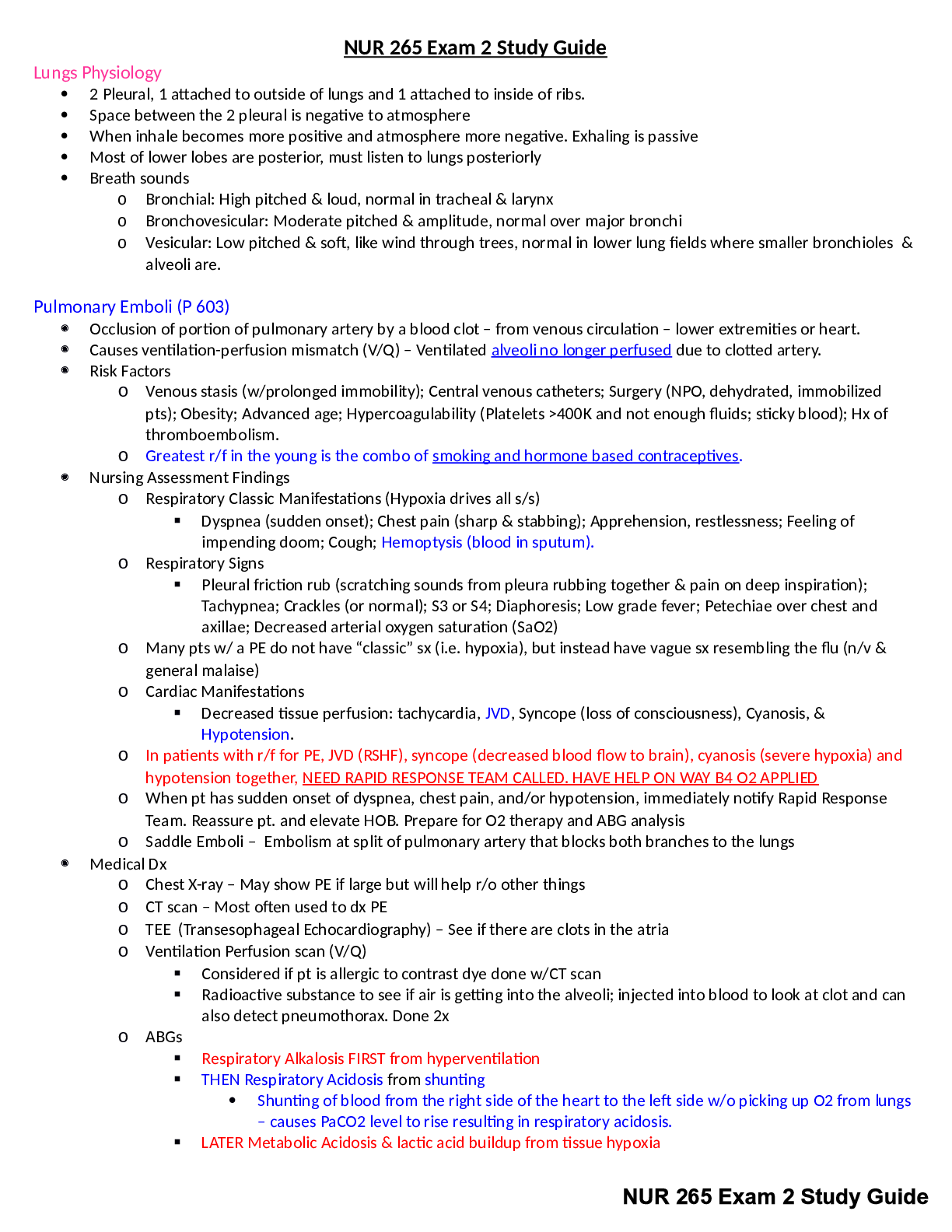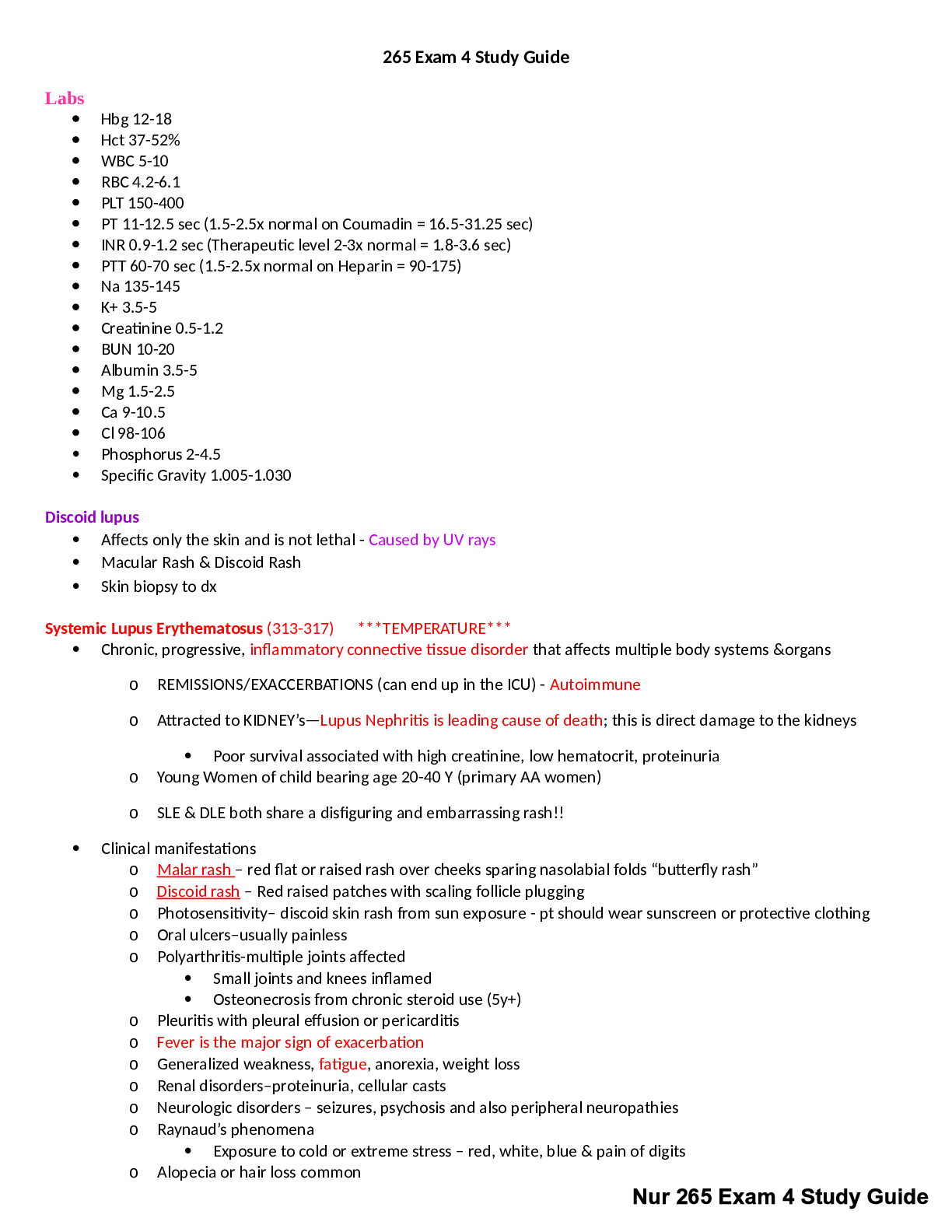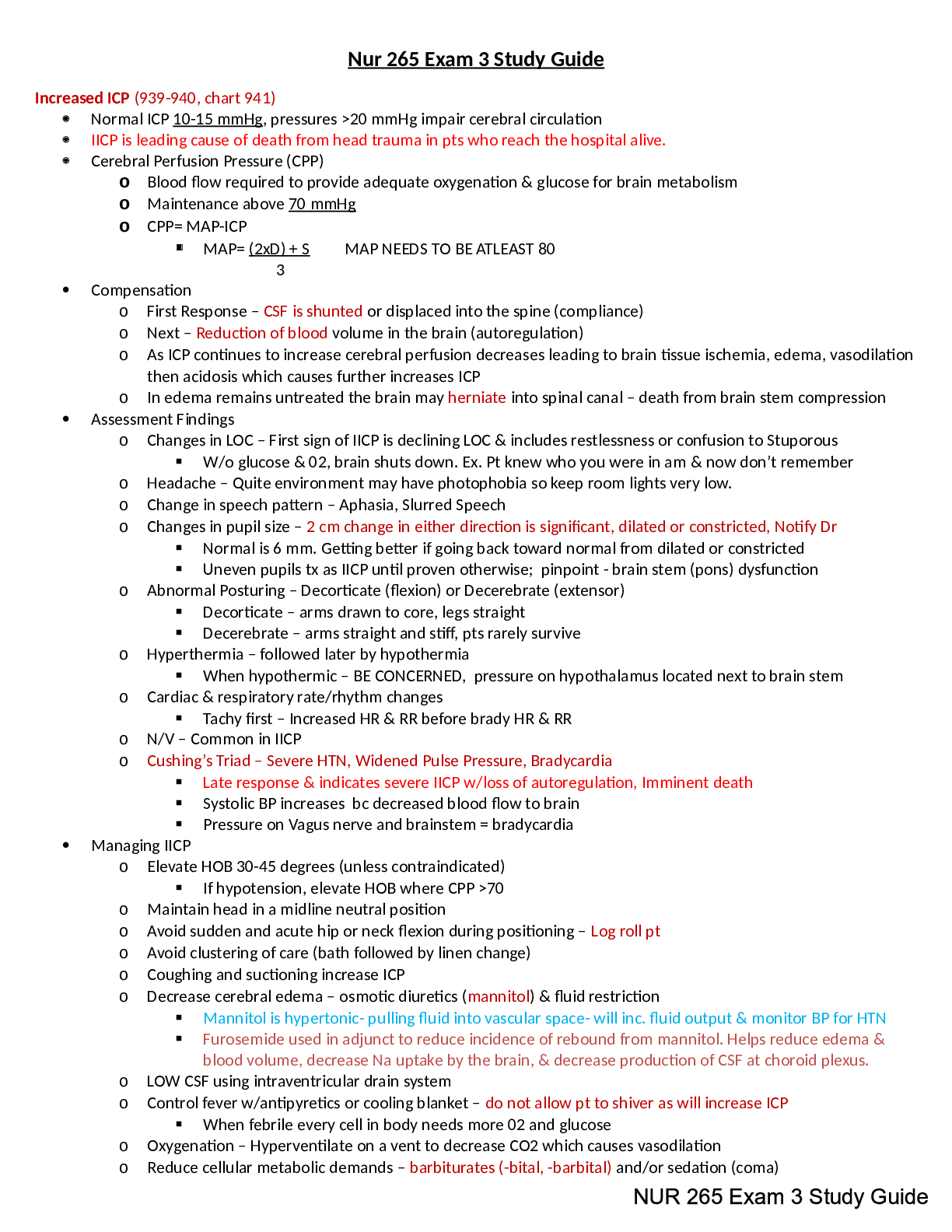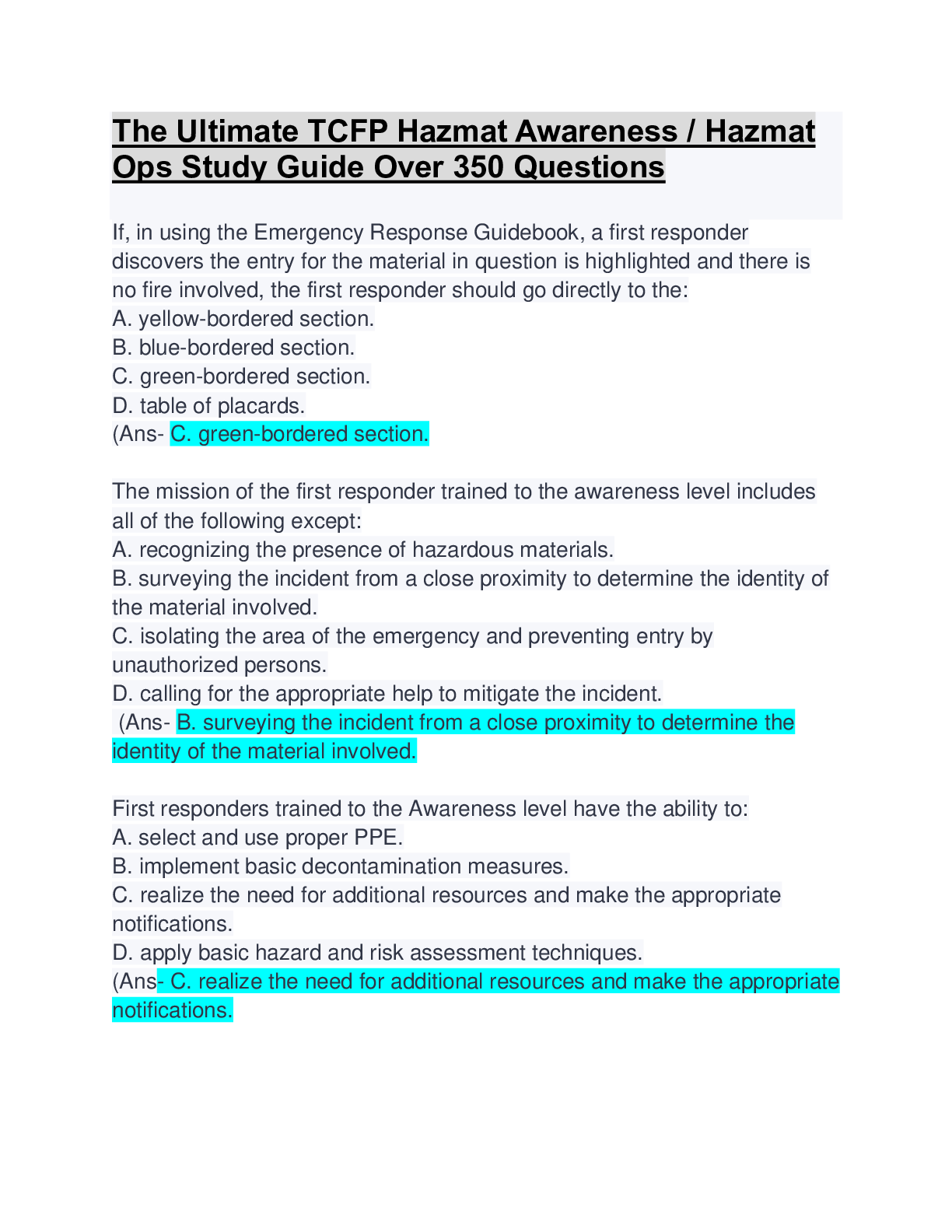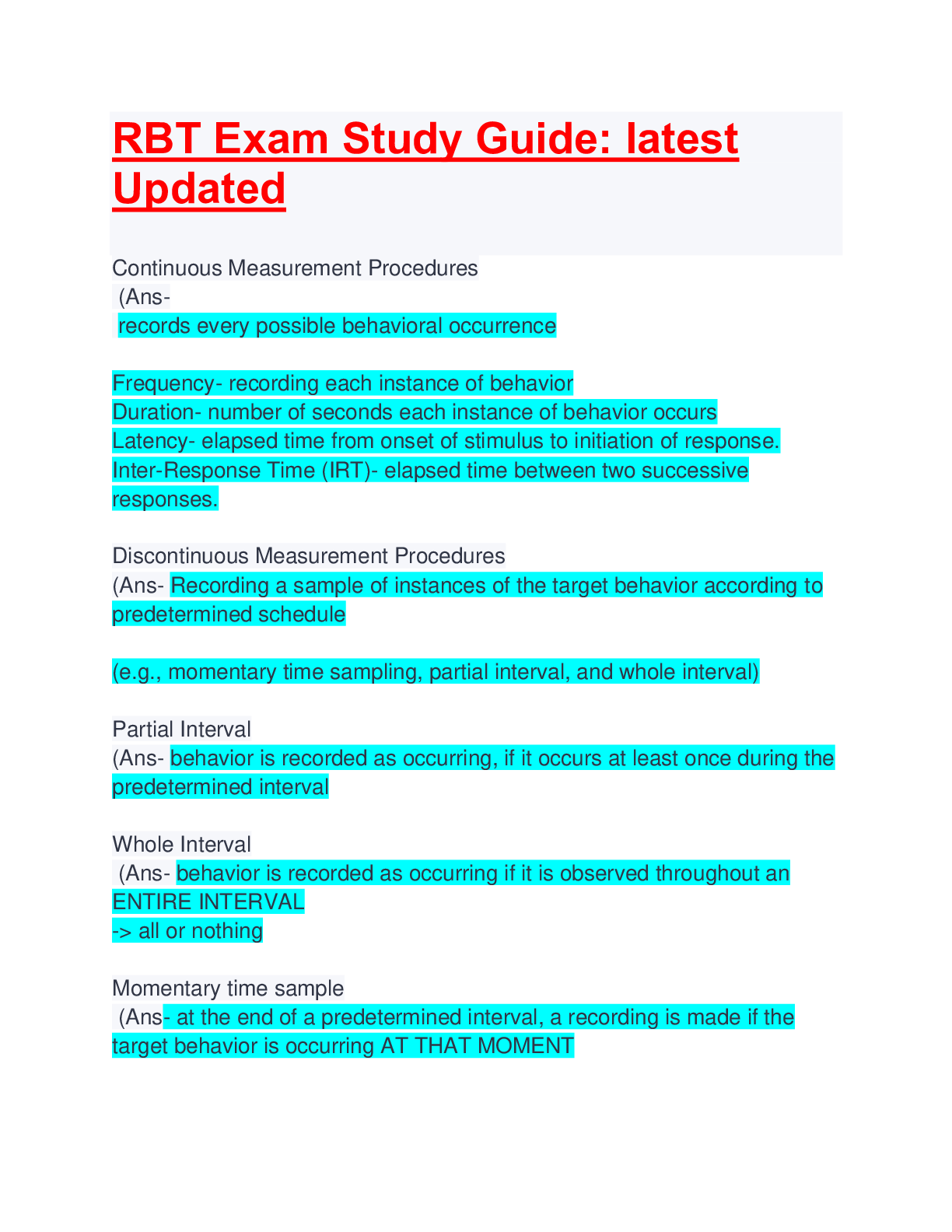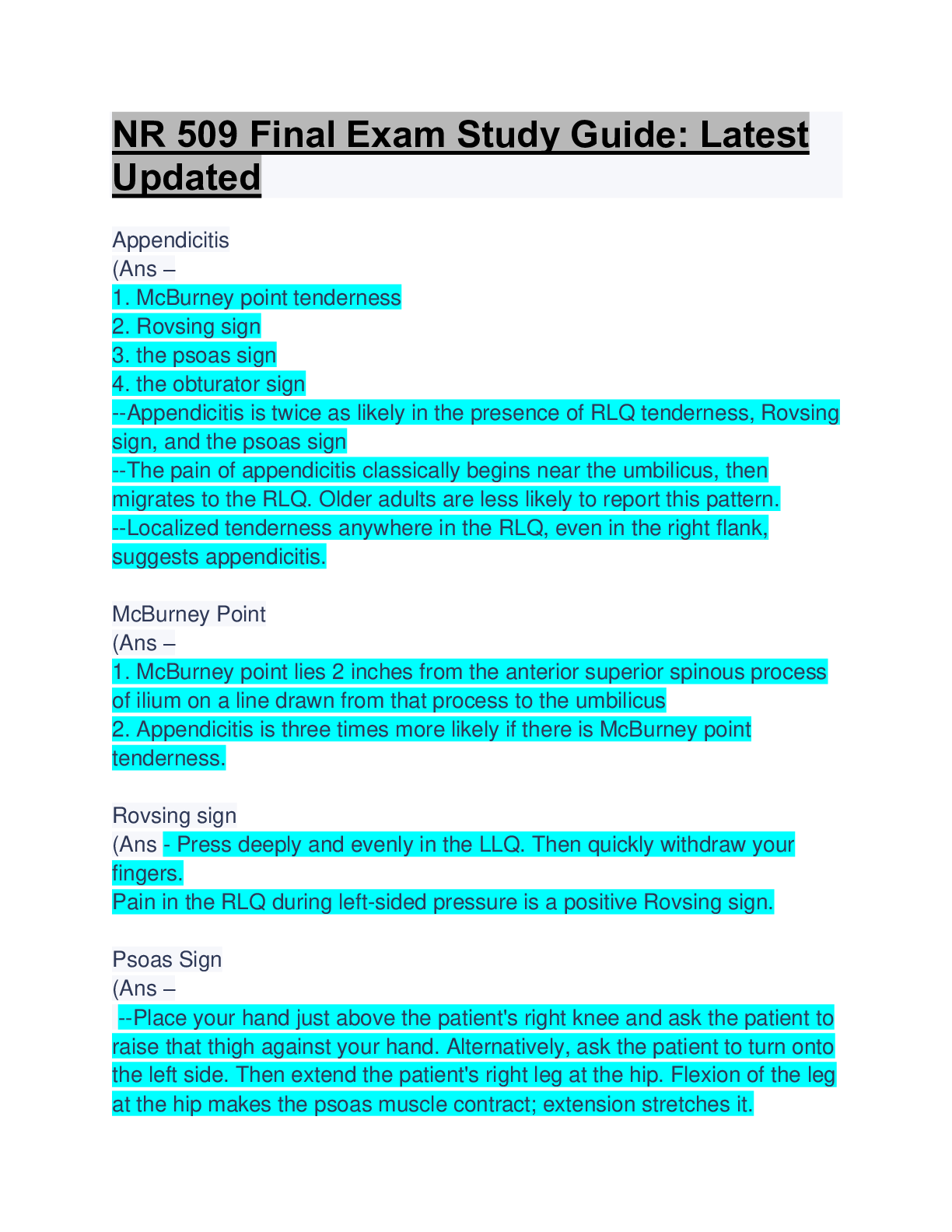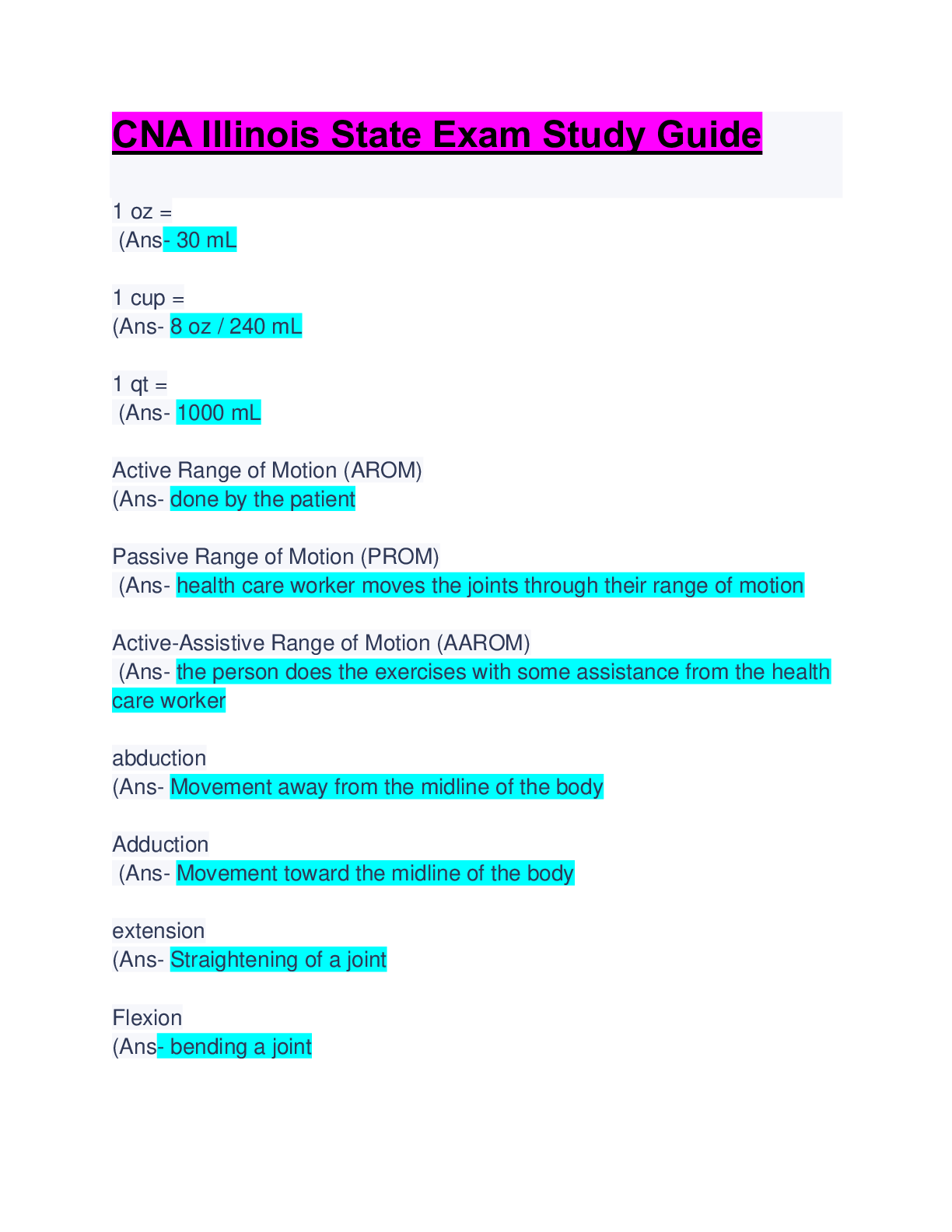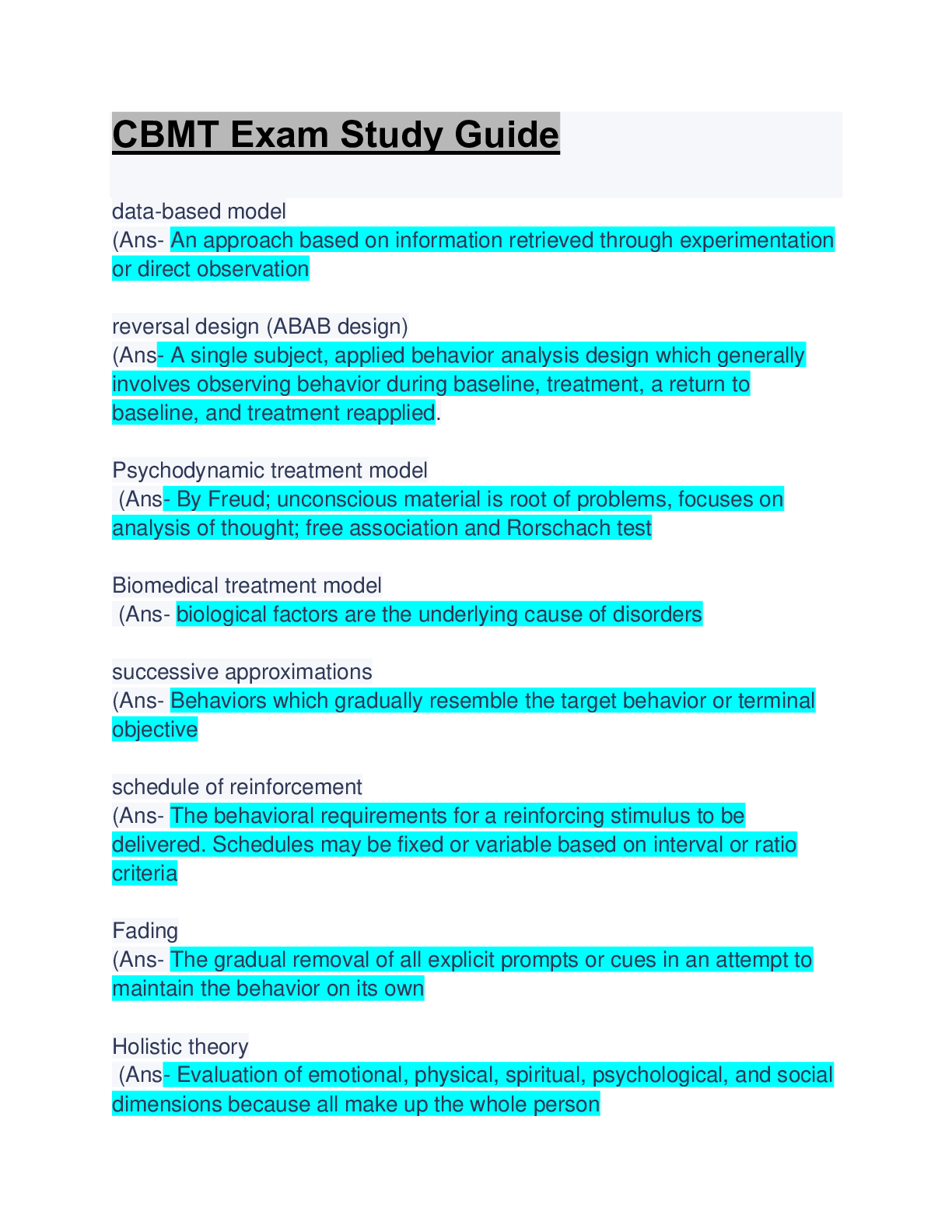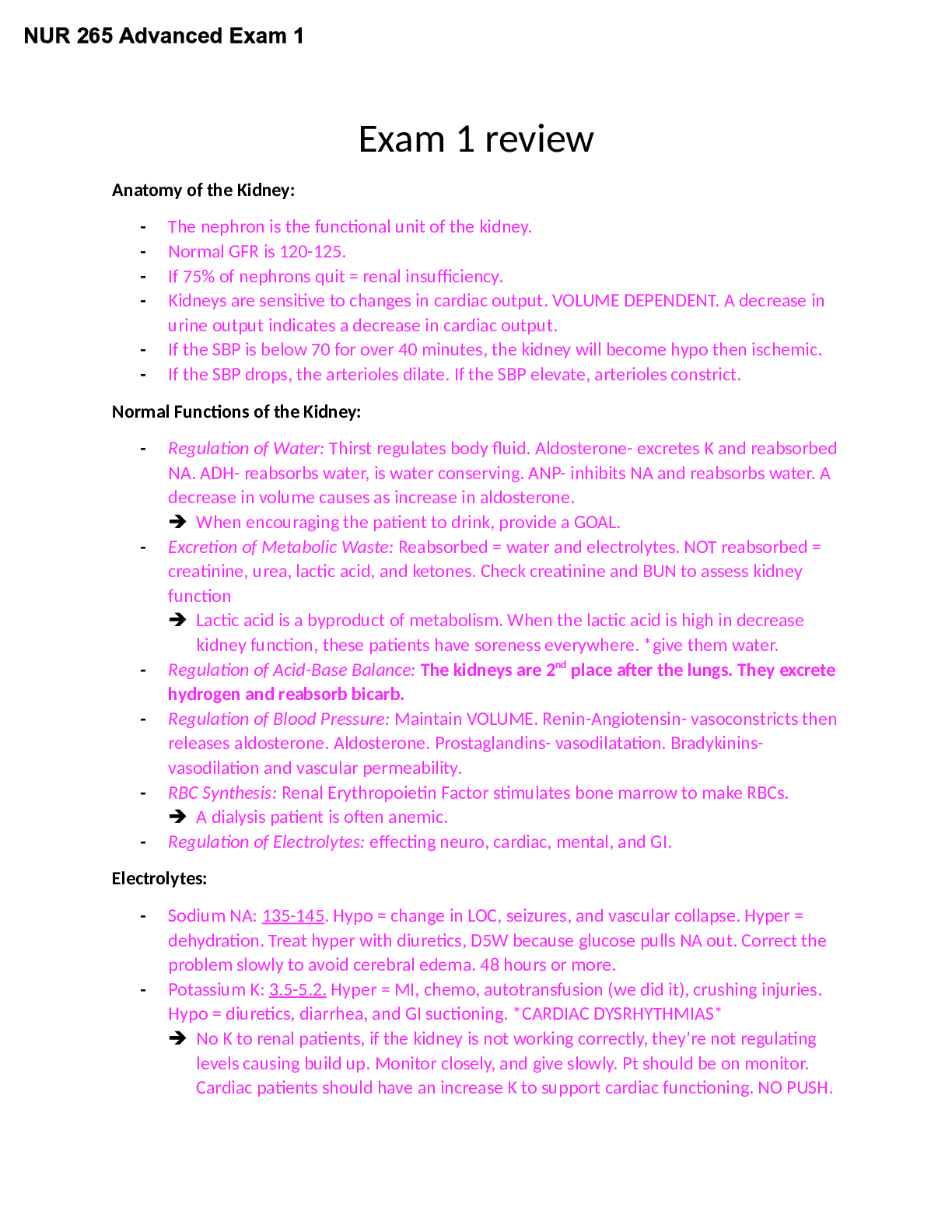Business > STUDY GUIDE > Music Therapy CBMT Exam Study Guide: Latest Updated Guide Solution (All)
Music Therapy CBMT Exam Study Guide: Latest Updated Guide Solution
Document Content and Description Below
Individuals with Disabilities Education Improvement Act (IDEA) (Ans- Originally passed by Congress in 1975 and reauthorized several times, most recently in 2004, the IDEA specifies the procedures fo... r insuring that all children with disabilities receives a free appropriate education in the least restrictive environment possible. It also includes requirements for parental involvement and due process procedures when parents or guardians disagree with a school's decision regarding their child. Individualized Education Program (IEP) (Ans- The federal special education law (IDEA) requires that an IEP be developed by a team for each student receiving special education services. The IEP must contain a statement of the student's present levels of educational performance, annual goals related to areas of deficit, short-term objective describing the intermediate steps to the annual goals, criteria and procedures for determining the achievement of the objectives, and educational services to be provided to the student. Any changes to a student's IEP must be agreed upon by the entire IEP team. Changes cannot be made unilaterally by one individual. Individualized Family Service Plan (IFSP) (Ans- A plan, similar to an IEP, by designed for young children (under 3 years of age) and their families. An IFSP is somewhat broader than an IEP in that it also specifies services and resource to be provided to the entire family in support of the child with disabilities. Least Restrictive Environment (LRE) (Ans- A legal term from the IDEA that specifies that students with disabilities must be educated as close to the same environment as their typical (nondisabled) peers. It is this provision on which inclusion is based. Manifestation Determination (Ans- A determination that a student's inappropriate behavior is not a result, or manifestation, of his or her disability. This is usually determined in a hearing and is required when a student's behavior violates school rules and before the school can undertake disciplinary action that might result in a student's suspension from school. Mnemonics (Ans- The use of memory-enhancing strategies or cues to remember something. This might include such things as rhymes, visualization or acronyms. Nonverbal Learning Disabilities (Ans- Refers to individuals who have a cluster of disabilities in social interaction, math, visual-spatial and tactual tasks. Peer Tutoring (Ans- A method used to integrate students with disabilities into general education settings. It is based on research that demonstrates that students can effectively tutor one another. It maximizes active student engagement with an academic task and can also improve social and communication skills. One particularly effective form is Classwide Peer Tutoring (CWPT). Positive Behavioral Support (PBS) (Ans- Using methods and techniques that support desirable and appropriate behavior rather than punishing undesirable or inappropriate behavior. It usually consists of determining what types of reinforcers would promote appropriate student behavior and then using those reinforcers to help the student engage in that behavior. Seizure (Ans- A sudden alternation of consciousness, usually accompanied by motor activity and/or sensory phenomena, caused by an abnormal discharge of electrical energy in the brain. Spina Bifida (Ans- A congenital midline defect resulting from failure of the bony spinal column to close completely during fetal development. It may occur anywhere from the head to the lower end of the spine. Because the spinal column is not closed, the spinal card can protrude, resulting in damage to the nerves and paralysis and/or lack of function or sensation below the site of the defect. Stereotypic Behaviors (Ans- Any of a variety of repetitive behaviors that are sometimes found in individuals who are have autism, blindness, or who are severely mentally retarded. May include such things as rubbing eyes, hand flapping, swaying from side to side, etc. Supported Employment (Ans- A method of integrating people with disabilities who cannot work independently into competitive employment. Includes the use of a job coach who helps the person with disabilities train for and succeed on the job. Systematic Instruction (Ans- Teaching that involves instructional prompts, consequences, or reinforcement, for performance, and transfer of stimulus control. It is usually used with individuals with mental retardation. Traumatic Brain Injury (TBI) (Ans- An injury through the brain due to an accident (not conditions present at birth, birth trauma, or degenerative disease). Results in total or partial disability that affects educational performance. It may affect any or all areas of cognition, language, memory, attention, judgment, motor skills, behavior, emotions, problem solving, or speech. Because as the brain heals the symptoms will change over time TBI requires close communication among education, medical and other professionals, and parents/guardians. Individual Transition Plan (ITP) (Ans- The IDEA requires that, no later than age 16 (or earlier if appropriate), each student's IEP should contain a statement of needed transition services. In addition, the ITP must include a statement of linkages and responsibilities for each appropriate agency for provide those services. The intent is to have a plan in place to facilitate the individual's successful transition from the school setting to the community. [Show More]
Last updated: 1 year ago
Preview 1 out of 131 pages
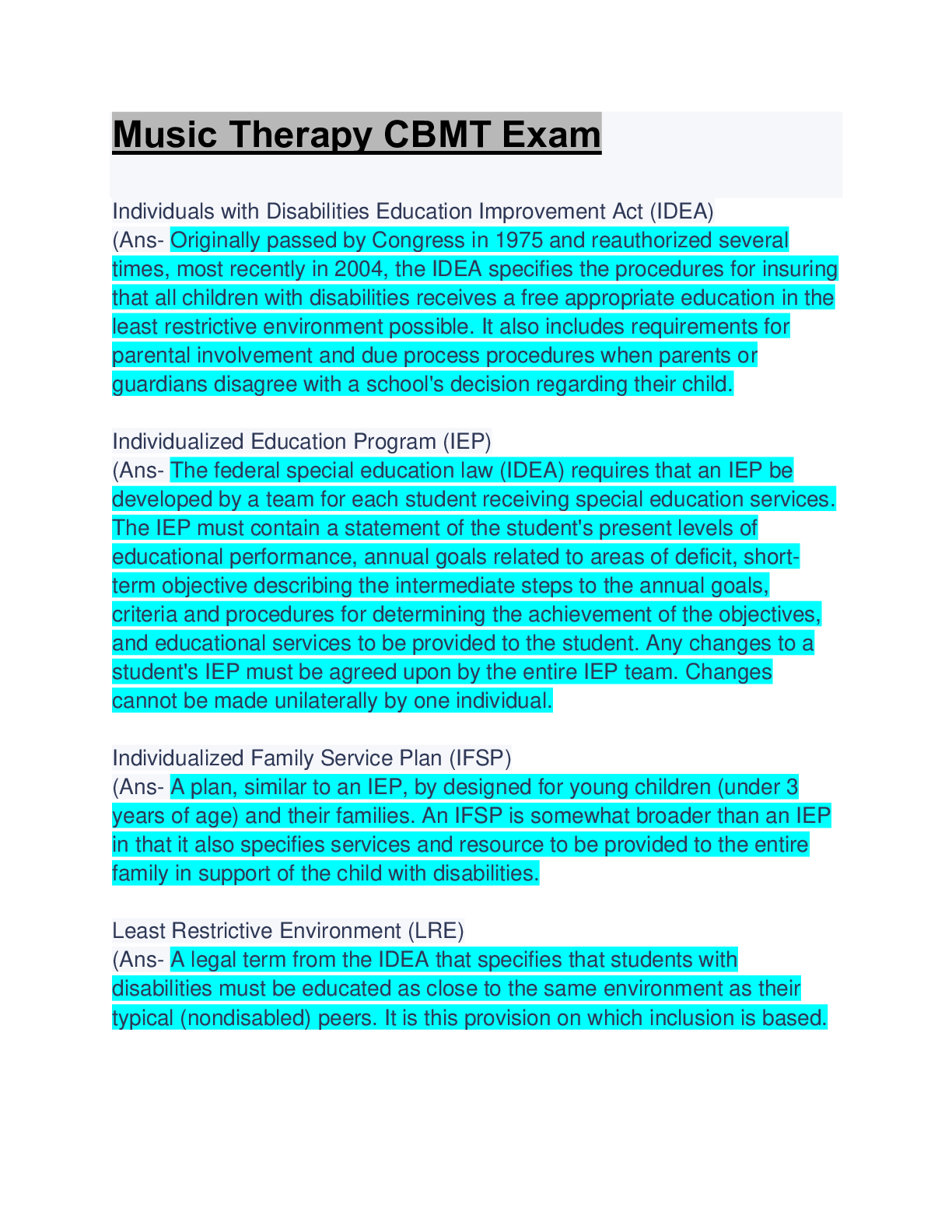
Reviews( 0 )
Document information
Connected school, study & course
About the document
Uploaded On
Apr 17, 2023
Number of pages
131
Written in
Additional information
This document has been written for:
Uploaded
Apr 17, 2023
Downloads
0
Views
91



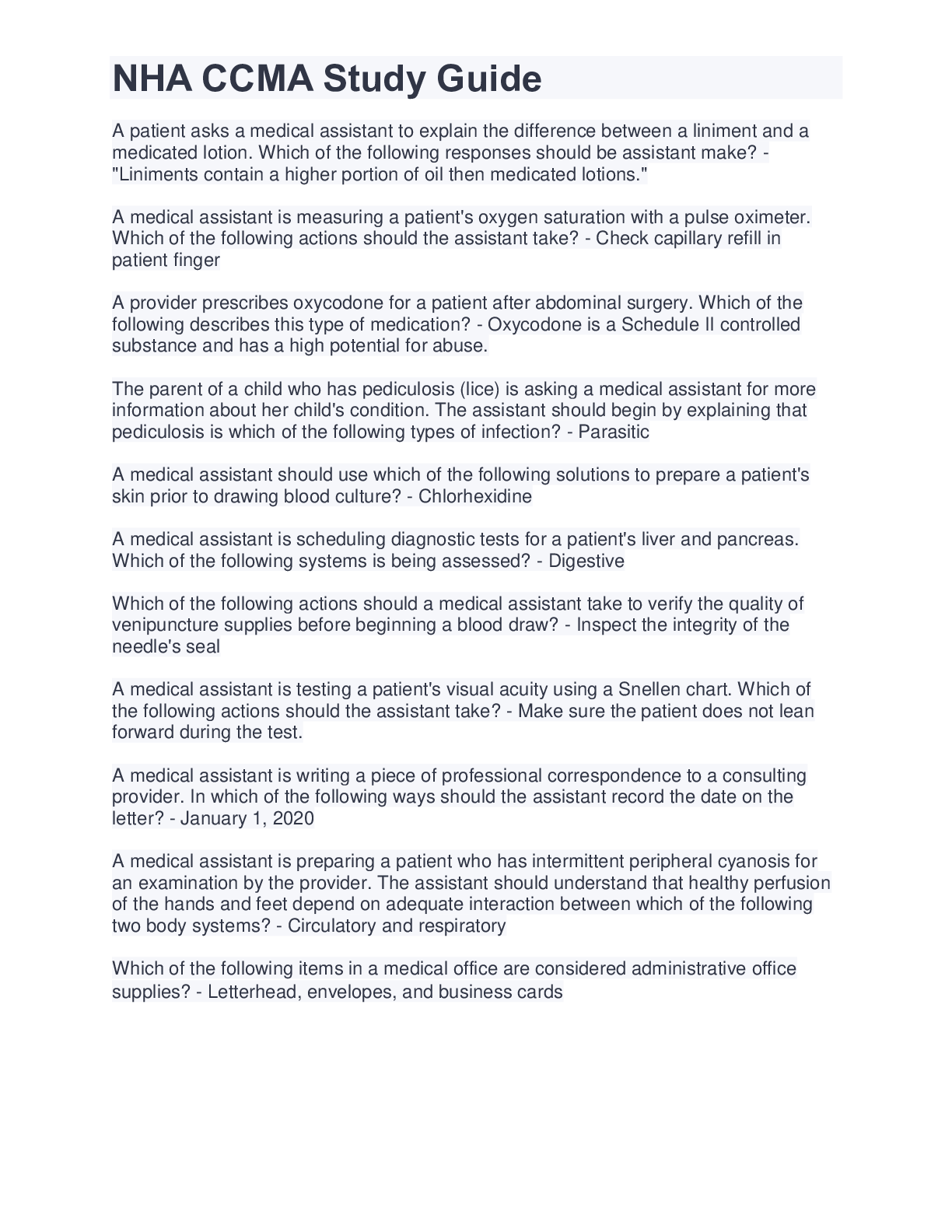

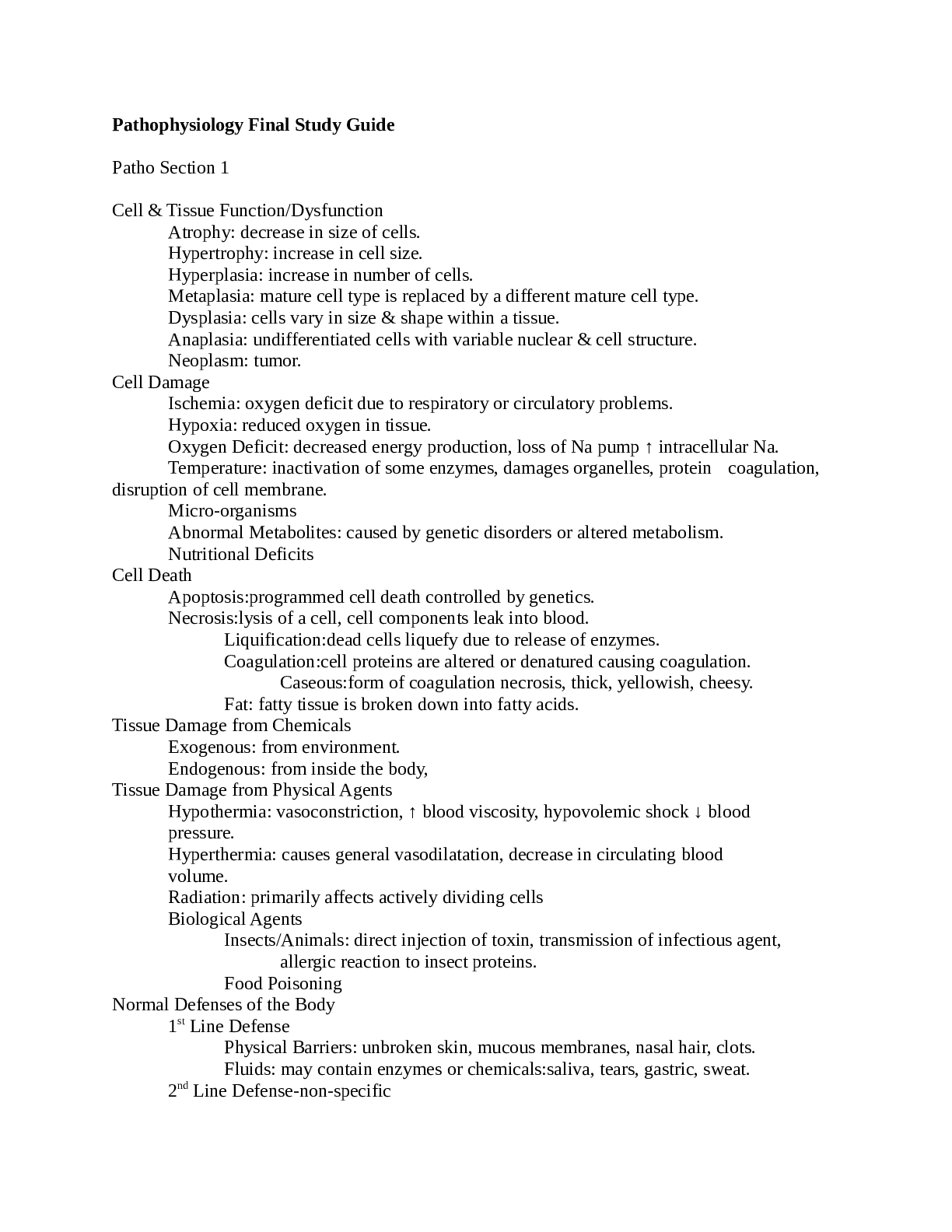

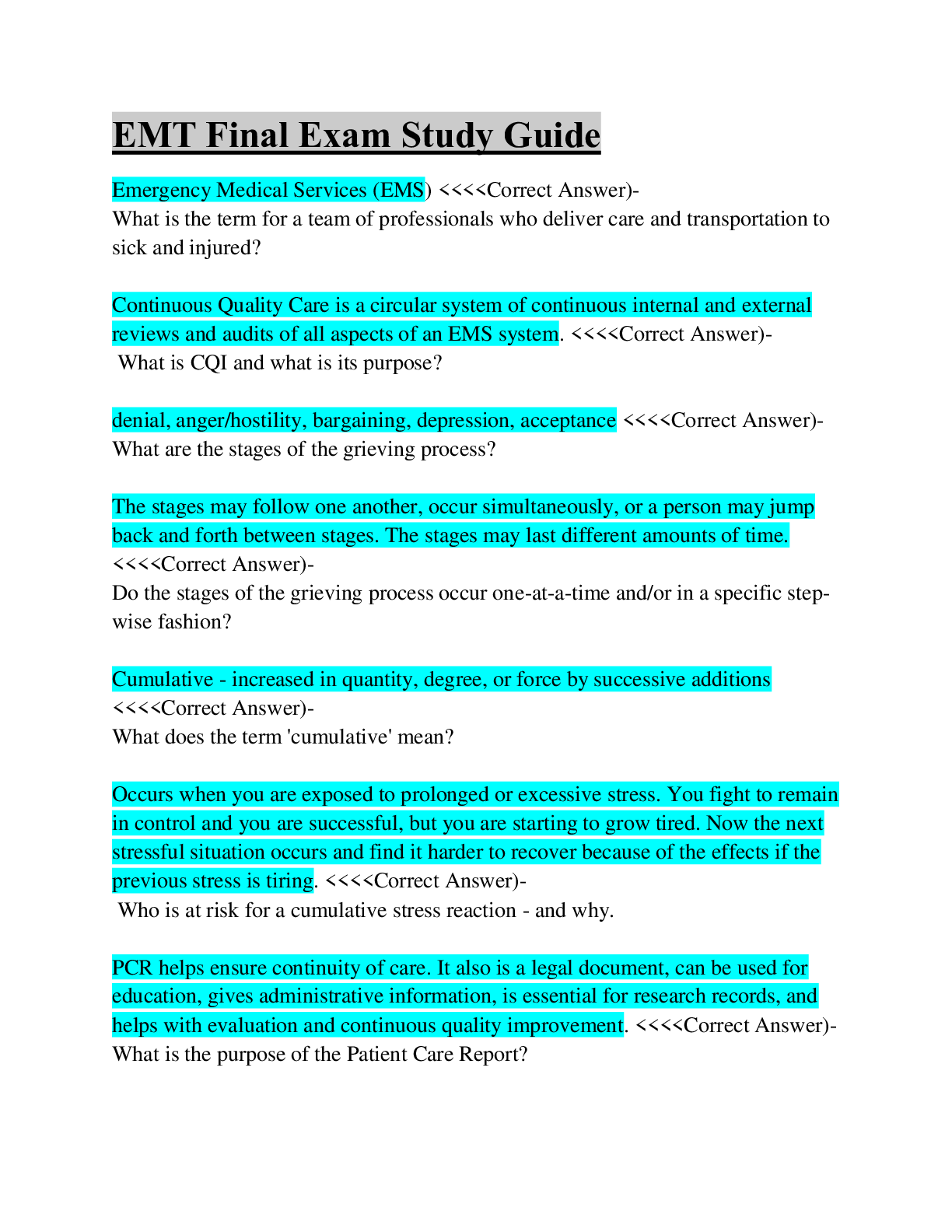
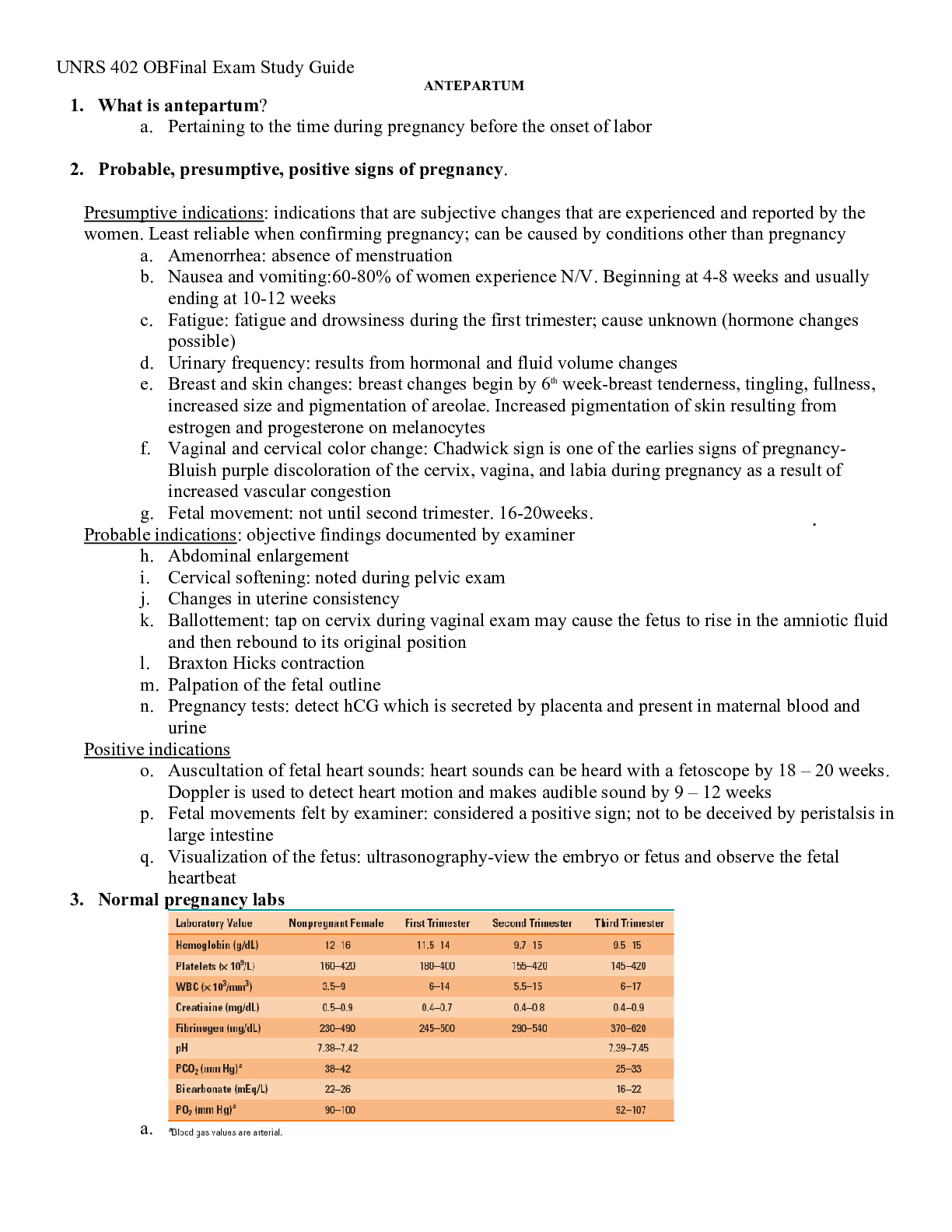
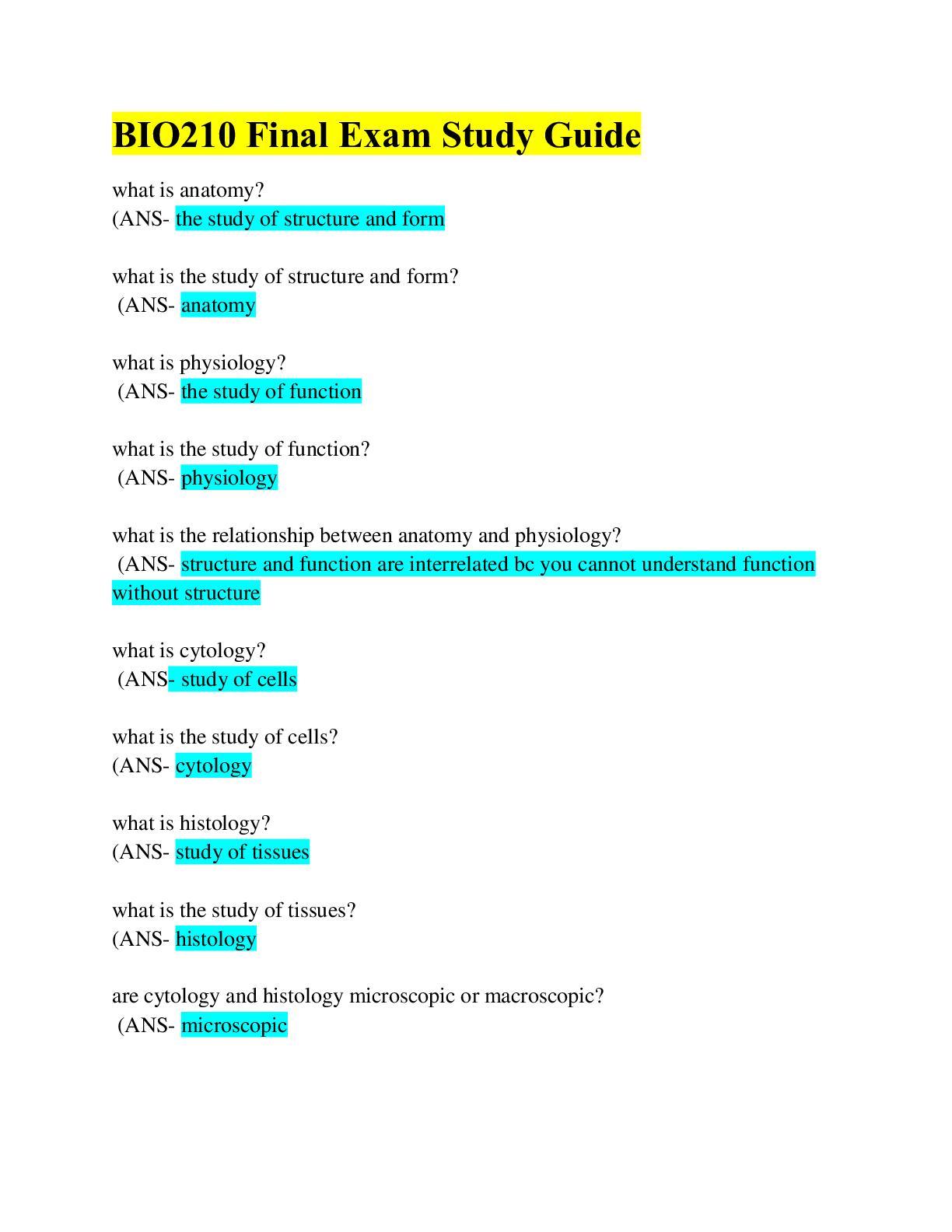
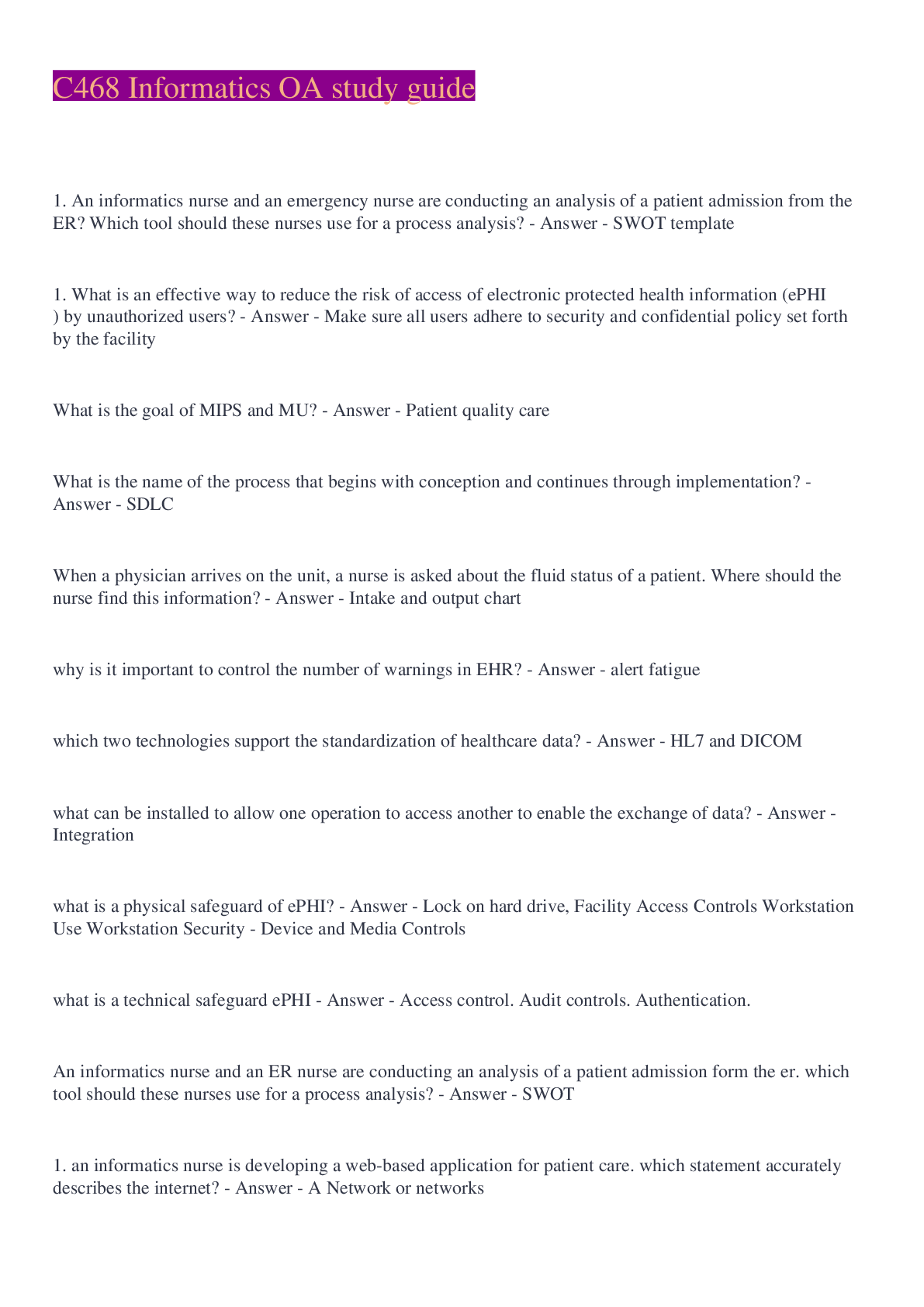



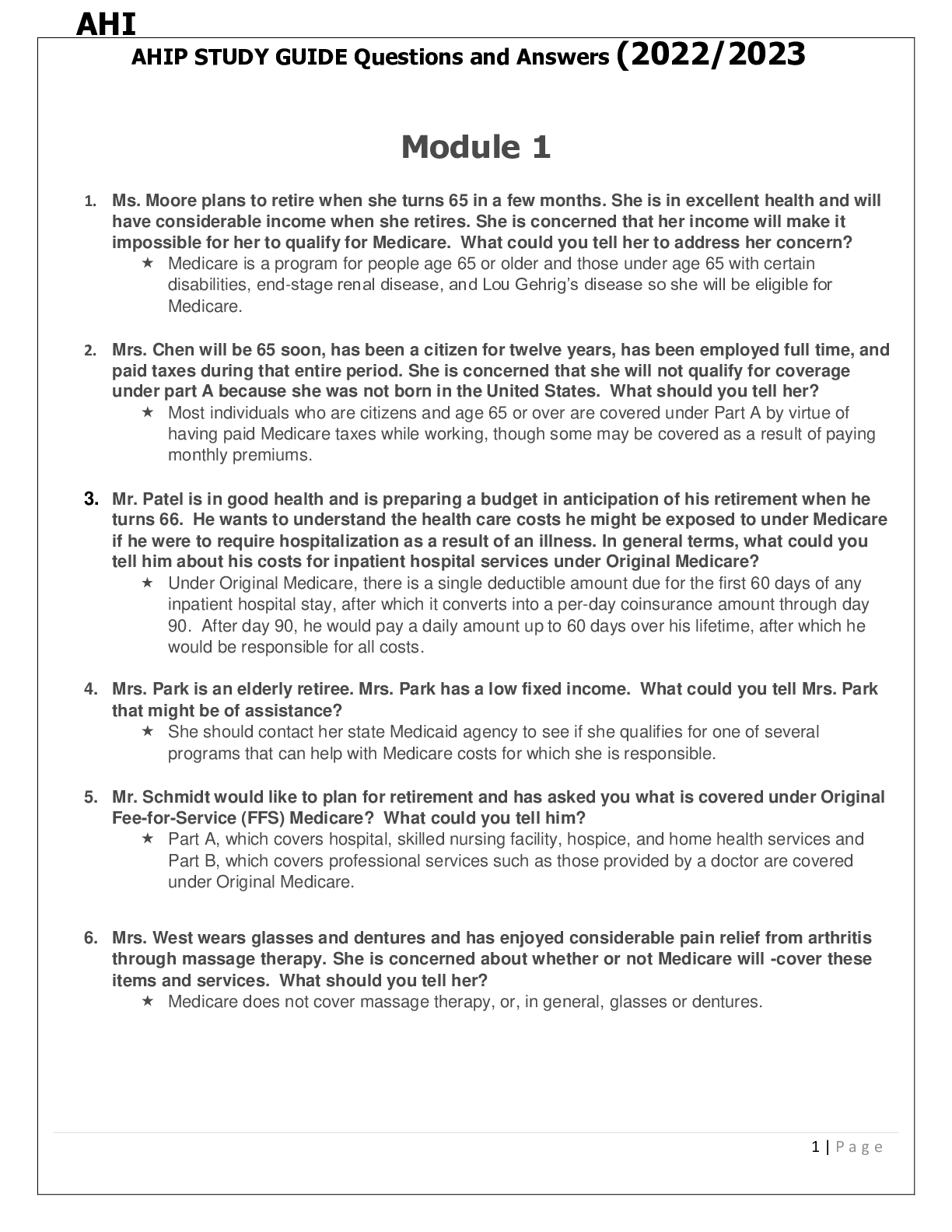
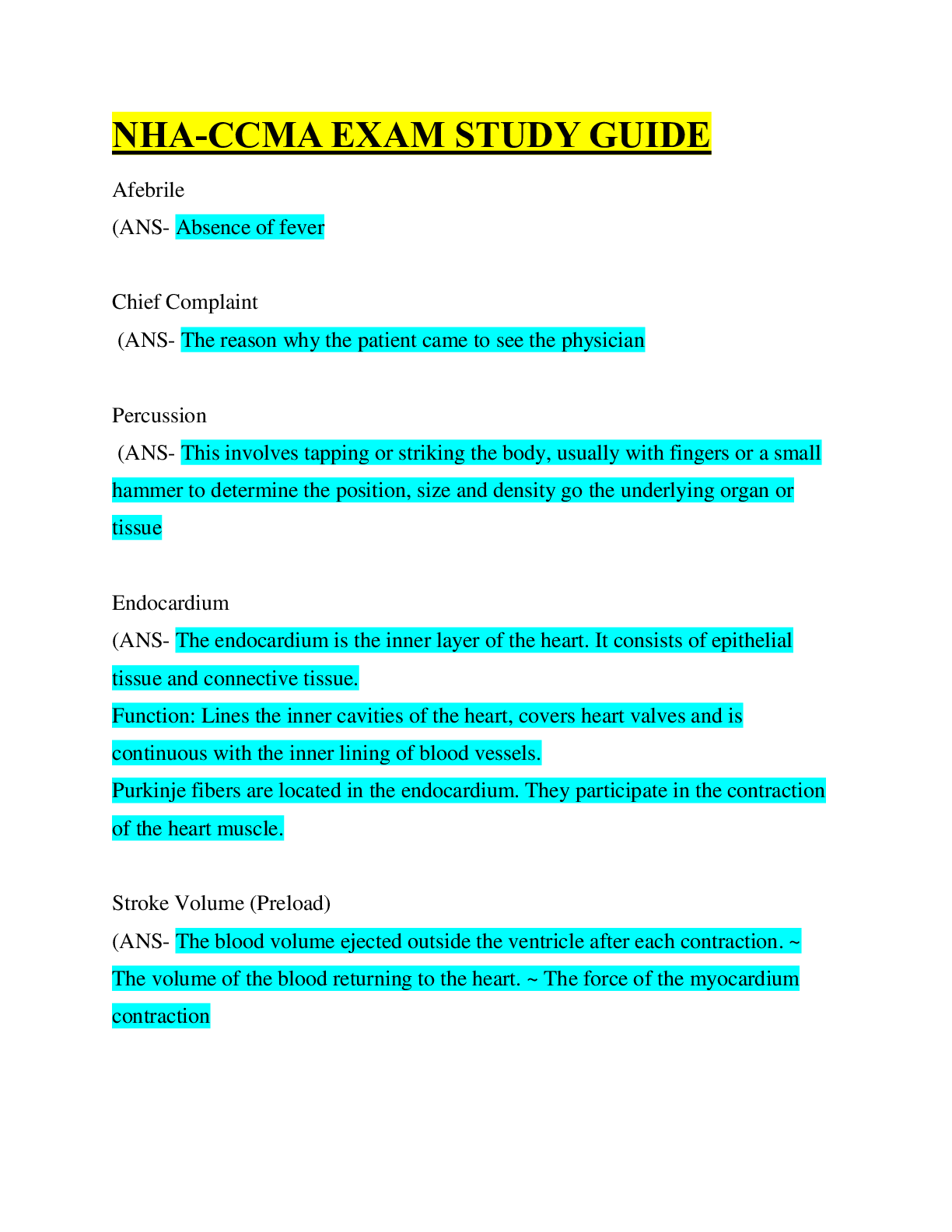
 Study Guide.png)
 Exam Study Guide.png)

